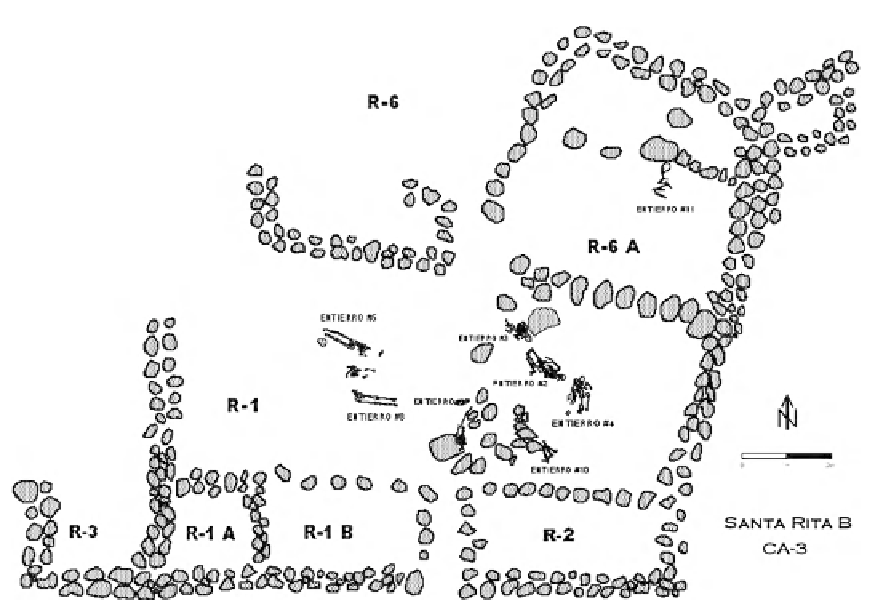Biology Reference
In-Depth Information
FIGURE 15.2
Detailed plan view of CA3 depicting the spatial relationship between human interments.
Adapted from
Gaither et al. (2009)
.
them for analysis. This process was initiated well in advance of my arrival in Peru for the
2006 field season with the help of colleagues from the Peruvian National Institute of
Culture-La Libertad.
3
Once permits were granted, samples of skeletal and dental tissues
were obtained from each individual recovered from CA3 and transported to the United
States for analysis. In this instance, approximately 15 mg of bone was sampled from long
bones and permanent first molars were retained. In addition, six modern
cuy
were obtained
for the purpose of establishing a “local” strontium baseline. Four of these animals were raised
in the Chao Valley approximately 3.5 km from the site, while two were purchased from a local
market in the upper Chao Valley where commodities are exchanged between valley and
highland inhabitants.
Wet Chemistry and Use of the Mass Spectrometer
All samples were prepared and analyzed in the Environmental Isotope Paleobiogeo-
chemistry Laboratory at the University of Illinois at Urbana-Champaign. Bone collagen
was prepared following
Ambrose (1990)
while bone and tooth carbonate was purified
3
Archaeological permits in Peru are now administered by the Ministry of Culture.

